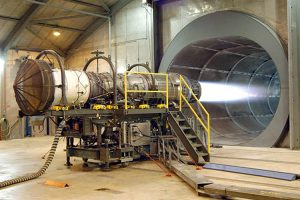 Aerospace engineering is the field of engineering associated with the design, development and manufacturing of both aircraft and spacecraft. It actually has two overlapping branches: aeronautical and astronautical engineering. The former refers to aircraft piloted within Earth’s atmosphere, while the latter refers to spacecraft piloted outside the Earth’s atmosphere. Today, we’re going to explore aerospace engineering, revealing some fun facts that you probably didn’t know.
Aerospace engineering is the field of engineering associated with the design, development and manufacturing of both aircraft and spacecraft. It actually has two overlapping branches: aeronautical and astronautical engineering. The former refers to aircraft piloted within Earth’s atmosphere, while the latter refers to spacecraft piloted outside the Earth’s atmosphere. Today, we’re going to explore aerospace engineering, revealing some fun facts that you probably didn’t know.
#1) A 747 Has More Than 6 Million Parts
A typical car has around 30,000 parts, including the screws and bolts. But if you think that’s a lot, you’ll probably be surprised to learn that a 747-400 passenger airliner has a jaw-dropping six million parts. Of those six million parts, about half consist of fasteners.
#2) ‘Aerospace Engineering’ First Appeared in the 1950s
According to”Engineering” by Stanzione, Kaydon Al (1989), the term “aerospace engineering” first appeared in 1958. This was actually a compound word borrowing the word “aerospace,” which refers to the combination of the Earth’s atmosphere and outer space. In that same year, the National Aeronautics and Space Administration (NASA) was founded.
#3) Aerospace Engineering Incorporates Dozens of Elements
As you can expect, aerospace engineering is a complicated field of study that incorporates dozens of other elements, some of which include fluid mechanics, astrodynamics, mathematics, control engineering, electrotechnology, materials science, solid mechanics, avionics, software, risk and reliability, noise control, flight text, aeroacoustics and more.
#4) Aerospace Engineering Professionals are in High Demand
If you’re looking to embark on a new career path, you may want to consider becoming an aerospace engineer. According to the Bureau of Labor Statistics (BLS), the average salary for this profession is approximately $107,830. Of course, there’s a good reason for this: commercial air travel is expected to grow in the years to come. And with this increased demand comes a greater need for engineers to design and manufacture airplanes.
#5) Aerospace Engineers Need a Bachelor’s Degree
Like other professionals, however, aerospace engineering requires schooling. Typically, aerospace engineers need a bachelor’s degree in aerospace engineering. With that said, however, some universities offer space-focused engineering courses,.
#6) Not to Be Confused with Avionics Engineering
Some people assume that aerospace engineering and avionics engineering are the same. While they share some similarities, they are two unique concepts with their own independent meaning. Avionics engineering, for instance, specifically refers to the electrical segment of aerospace engineering.
These are just a few fun and surprising facts about aerospace engineering.



